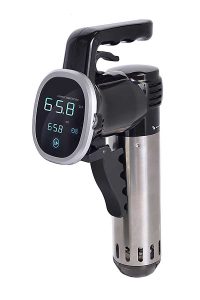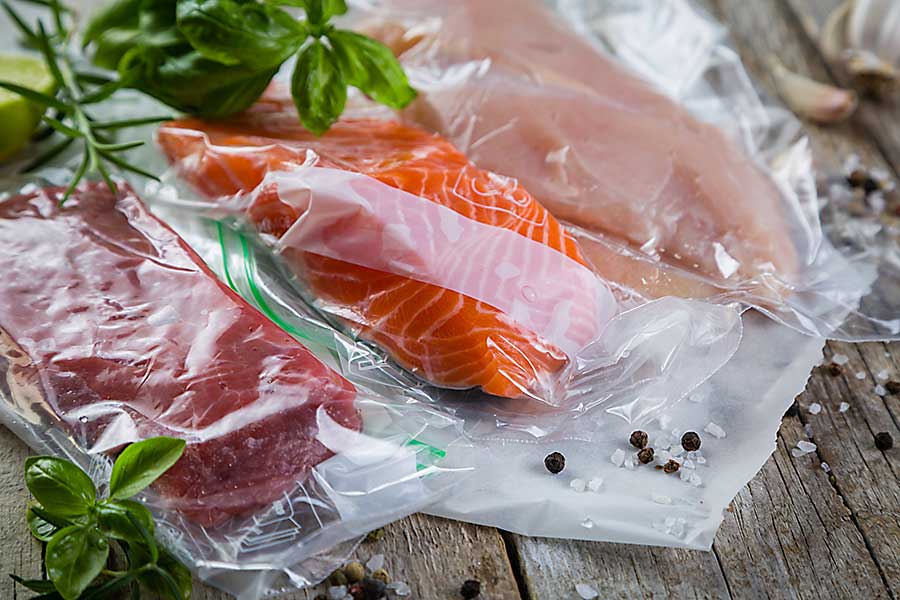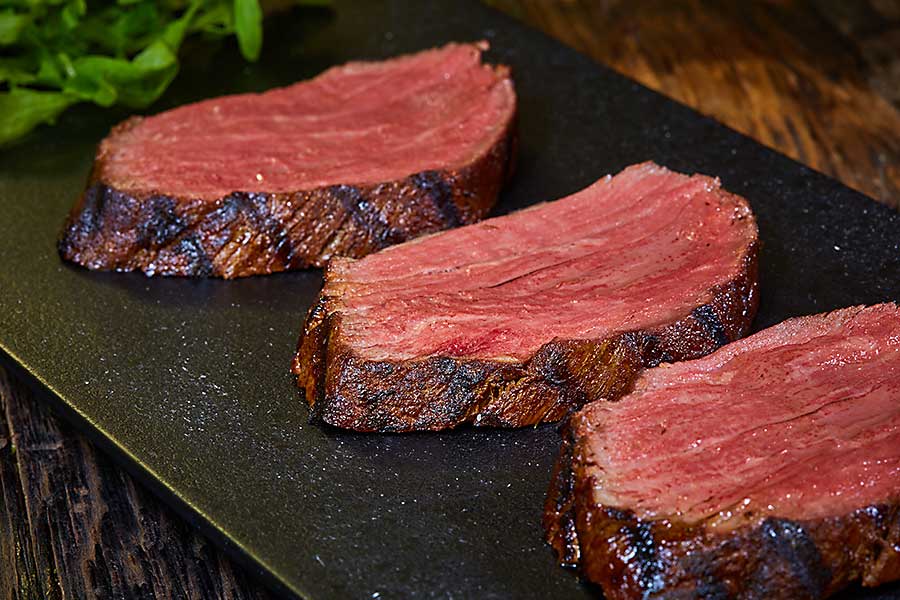Sous-vide
Sous vide is a culinary technique whereby food is vacuum sealed in a bag before being cooked in a water bath at very precise temperatures. The sous vide technique produces unique results that cannot be emulated in any other method of cooking. Food retains moisture, appearance, succulence, and flavour, without drying out or overcooking.
The term sous vide in French means ‘under vacuum’, and it was first described by Sir Benjamin Thompson, Count Rumford in 1799. The method is also sometimes referred to as ‘low temperature long time’ (LTLT) cooking.
What makes sous vide cooking special
There are many reasons why sous vide cooking is prized amongst restaurants and chefs. Not only does the technique produce results that cannot be achieved through other cooking methods, but it also demands little attention from the chef. Cooking sous vide gives more constant control over heat and temperature. This prevents overcooking of food and makes it simple to maintain consistent texture and flavour. Food maintains moisture, does not dry out, and retains its original appearance. Maximum flavour is achieved and meat is able to be tender and juicy because it is sealed and cooked in its own juices. This means that chefs can guarantee consistent and flavoursome results without constantly having to adjust and check temperatures. Another benefit is that foods can maintain their full vitamin and nutritional value. This is because the nutrients are not destroyed at high temperatures as in frying.
How to cook sous vide
When cooking sous vide, food can be placed in plastic bags or pouches, as well as glass jars, and is left to cook in the water bath for anywhere between 1 – 7 hours. Depending on the recipe and the food, sous vide can be left to cook for as long as 48 hours. The water temperature must be regulated at an extremely low heat – much lower than in traditional cooking. The temperature may be around 55 to 60 degrees celsius for meats, and slightly higher for vegetables. The low heat is designed to retain the moisture and succulence of the food, preserving the subtle flavours and aromas of the cooking. It also allows for food to cook evenly from the inside out and prevents loss of protein structures in meat. This means that meat can maintain its original texture and tenderness, while vegetables can become soft while still crispy on the outside.
A limitation of sous vide cooking is that the Maillard reaction cannot happen due to the low temperature of the water. This flavour, browning, and crispiness is highly prized in certain dishes such as steaks, and cannot be achieved through sous vide. For this reason, chefs will often briefly grill or sear their meats before cooking them sous vide, or after.
Essential elements of sous vide cooking
It is essential to seal food in plastic pouches or glass jars when cooking sous vide. This is how the juices and flavours of the food are retained, and what makes the sous vide method unique. These flavours and juices are often lost in traditional cooking processes. A water bath is also necessary for sous vide, with the temperature set at the desired final cooking temperature.Setting the precise temperature allows for controlled cooking and very even results – even with extremely thick meat or fish. This prevents overcooking, as is common with roasting or grilling food. Instead of worrying about removing food too early or too late, food will be cooked at the desired temperature and no less or more. The final element of sous vide cooking is an air tightness that prevents oxidation. This allows for food to be stored for longs amounts of time after cooking, especially useful for restaurants and caterers.
Private Chefs, Art of Dining
CHEFIN is a private chef platform that’s reimagining social dining.
You can easily connect with 1 of our 250 private chefs and treat your guests to restaurant-quality dining experiences in the comfort of your own home, office or chosen venue. From high-end dining to quirky social food experiences, the CHEFIN platform makes it effortless for you to access gourmet food that’s worthy of a Michelin-starred establishment.
What you get:
-
- Your very own private chef who is vetted and insured,
- A customised menu for your needs,
- 24/7 concierge support,
- Complete post-dinner cleanup,
- A fun, stress-free, and unforgettably dining experience!

